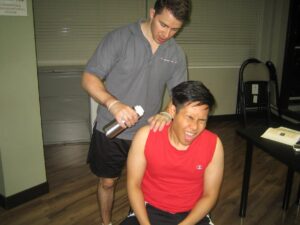For burns, especially the first-degree burns, you can provide first aid for burns in order to minimize the symptoms.
Degrees of burns
Burns are classified in three categories – first-degree, second-degree and third-degree. The first-degree burns only involve the exterior surface of the skin and the symptoms include redness, minor pain and swelling.
For the second-degree burns, it involves the epidermis and dermis. Blisters can appear and the affected area is painful since the nerve endings are damaged. Lastly, the third-degree burns reaches deep into the dermis and characterized by swelling, numbness due to destroyed nerve endings, dry leathery skin and black or white colored skin.
What to do if an individual suffers from a burn

The initial move is to cool the burned area using cool running water for several minutes. Avoid spraying burns; simply allow the water to run through the burned area.
For minor burns, the first aid for burns included cooling the burn with tap water over the sink. Just remember not to use ice to cool down a burn. Ice can cause frostbite quickly if used on a burn since the skin is already damaged. In case you called for emergency assistance, continue cooling the burn with running water until the medical team arrives.
You should call for emergency assistance if there is charring or blistering in the following areas:
• Genitals
• Face
• Entire wrist, leg, arm or ankle
• Entire foot or hand
• Any part of the body that covers an area larger than the size of the chest
Do not hesitate to get in touch with emergency assistance if the body parts stated were not included. Always remember that in order to prevent any burn from causing more damage, immediate medical care is needed.
Mild burns can be easily treated using an ointment or spray for burns in order to minimize the pain. Just use ointments that are water-soluble. If blisters are present, do not break them open. Continue to cool the affected area under running water to reduce the pain.
Avoid the application of oil or butter to any burn. Take note that oils will only trap the warmth and lead to the deepening of the burn over time. For pain relief, over-the-counter medications for pain such as acetaminophen or ibuprofen can be used. In case of severe pain, consult a doctor or go to the emergency department at the nearest hospital.
When to seek emergency assistance
Burns basically destroy the skin structure and the loss of its function can result to dehydration, infection and hypothermia. It is important to ensure that individuals suffering from burns are given medical care if the following are present:
• Weakness
• Confusion or dizziness
• Shivering
• Fever
• Cold sweats
During the healing process of burns, the individual should wear loose clothing pieces such as those made out of silk or light cotton. Harsh fabrics will only cause irritation to the skin and worsen the condition of the burn.
